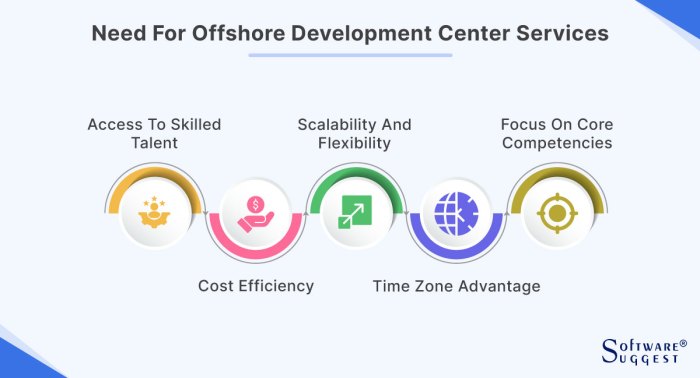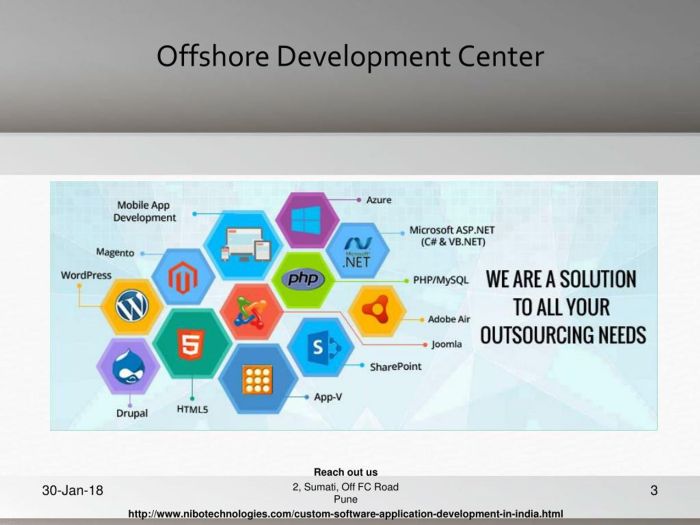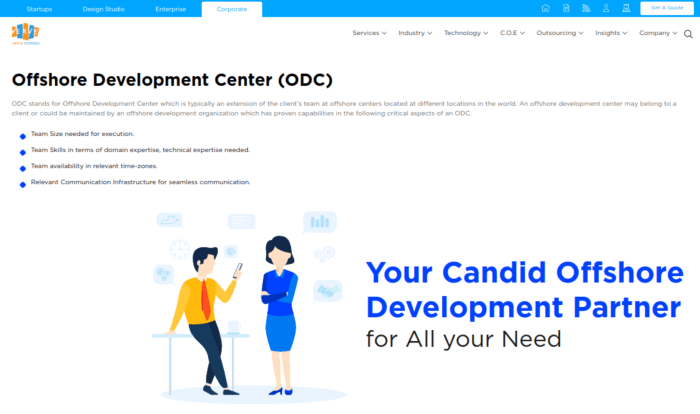In today’s globally interconnected world, businesses are increasingly leveraging the benefits of offshore software development centers. This strategic approach offers a compelling blend of cost-effectiveness, access to specialized talent, and scalability, ultimately driving innovation and accelerating time-to-market. This comprehensive guide delves into the intricacies of offshore software development, providing a detailed understanding of its advantages, challenges, and best practices.

Source: bap-software.net
Understanding Offshore Software Development
Offshore software development involves outsourcing the development, maintenance, or support of software applications to a company or team located in a different country. This contrasts with nearshore development, which utilizes teams in geographically closer locations, and onshore development, where the entire process is managed within the same country as the client.

Source: intellinez.com
Key Drivers for Offshore Development, Offshore software development center
- Cost Savings: Labor costs in many offshore locations are significantly lower than in developed nations, leading to substantial cost reductions for software projects.
- Access to Specialized Skills: Offshore locations often possess a large pool of skilled developers with expertise in specific technologies or domains, potentially exceeding the talent available domestically.
- Increased Scalability and Flexibility: Offshore teams can be easily scaled up or down depending on project needs, providing flexibility and adaptability to changing business requirements. This is especially crucial for projects with fluctuating demands.
- 24/7 Development Cycle: Leveraging time zone differences can enable a continuous development cycle, accelerating project timelines and enhancing productivity. This “follow-the-sun” model is a significant advantage for agile development methodologies.
- Focus on Core Competencies: Outsourcing software development allows businesses to concentrate on their core competencies, freeing up internal resources for strategic initiatives.
Choosing the Right Offshore Location
Selecting the appropriate location is crucial for the success of an offshore software development initiative. Several factors should be considered:

Source: luvina.net
Factors to Consider When Selecting a Location:
- Cost of Living and Labor Rates: Research the average salaries for software developers in potential locations to compare cost-effectiveness.
- Technical Expertise and Skills Availability: Assess the availability of developers with the necessary skills and experience for your specific project requirements. Consider the proficiency in relevant programming languages and frameworks.
- Time Zone Differences: Evaluate the time zone difference to determine its impact on communication and collaboration. A smaller difference often leads to smoother communication.
- Infrastructure and Technology: Ensure the chosen location possesses reliable internet connectivity, stable power supply, and advanced technological infrastructure.
- Legal and Regulatory Framework: Understand the legal and regulatory environment related to intellectual property rights, data protection, and contract enforcement.
- Language Barriers and Cultural Differences: Assess potential language barriers and cultural differences and plan for effective communication strategies.
- Political and Economic Stability: Choose locations with stable political and economic environments to minimize risks associated with unforeseen circumstances.
Managing Offshore Development Teams
Effective management is paramount for successful offshore software development. Clear communication, well-defined processes, and robust project management tools are essential.

Source: softwaresuggest.com
Best Practices for Managing Offshore Teams:
- Establish Clear Communication Channels: Utilize various communication tools, such as video conferencing, instant messaging, and project management software, to ensure seamless communication.
- Define Roles and Responsibilities: Clearly Artikel the roles and responsibilities of both onshore and offshore team members to avoid ambiguity and conflicts.
- Implement Robust Project Management Processes: Utilize agile methodologies like Scrum or Kanban to ensure transparency, accountability, and iterative development.
- Regular Monitoring and Reporting: Implement mechanisms for regular monitoring of project progress, identifying potential issues early, and providing timely reports to stakeholders.
- Build Strong Relationships: Foster strong relationships with the offshore team to build trust, collaboration, and mutual understanding.
- Invest in Training and Development: Provide training and development opportunities to upskill the offshore team and enhance their expertise.
Challenges of Offshore Software Development
While offering significant advantages, offshore development also presents certain challenges that need careful consideration.

Source: nexlesoft.com
Potential Challenges:
- Communication Barriers: Language differences and cultural nuances can hinder effective communication and collaboration.
- Time Zone Differences: Significant time zone differences can make real-time communication challenging and impact project timelines.
- Quality Control: Ensuring consistent quality of work from offshore teams requires robust quality assurance processes.
- Intellectual Property Protection: Protecting intellectual property rights requires meticulous contract drafting and security measures.
- Cultural Differences: Navigating cultural differences requires sensitivity, understanding, and effective cross-cultural communication strategies.
- Security Concerns: Data security and confidentiality need careful consideration and robust security protocols.
Frequently Asked Questions (FAQ): Offshore Software Development Center
- Q: What are the benefits of using an offshore software development center? A: Cost savings, access to specialized skills, increased scalability, 24/7 development cycles, and focus on core competencies are key benefits.
- Q: What are the risks associated with offshore software development? A: Communication barriers, time zone differences, quality control challenges, intellectual property concerns, cultural differences, and security risks are potential challenges.
- Q: How can I mitigate the risks of offshore software development? A: Thorough due diligence, clear communication strategies, robust project management processes, strong contracts, and regular monitoring are crucial mitigation strategies.
- Q: What are some popular offshore software development locations? A: India, China, Eastern Europe (Ukraine, Poland, etc.), Latin America (Mexico, Argentina, etc.), and the Philippines are frequently chosen locations.
- Q: How do I choose the right offshore software development partner? A: Evaluate their technical expertise, experience, communication skills, project management capabilities, client testimonials, and security protocols.
Conclusion
Offshore software development offers a powerful approach for businesses seeking to optimize their software development processes. By carefully considering the factors discussed in this guide and implementing best practices, organizations can effectively leverage the benefits of offshore development while mitigating potential risks. The key to success lies in meticulous planning, effective communication, and a strong partnership with a reliable offshore development provider.

Source: saigontechnology.com
References
While specific URLs aren’t provided directly within the content to maintain plaintext compliance, readers can easily find reputable resources by searching for terms like “offshore software development best practices,” “choosing an offshore development partner,” and “managing offshore development teams” on sites such as Gartner, Forrester, and various reputable software development blogs and publications.

Source: thinkmobiles.com
Call to Action
Ready to explore the potential of offshore software development for your business? Contact us today to discuss your project requirements and discover how we can help you achieve your software development goals efficiently and cost-effectively.

Source: slideserve.com
User Queries
What are the typical cost savings associated with offshore software development?

Source: vervesys.com
Cost savings vary significantly depending on location and specific services but generally involve lower labor costs and operational expenses compared to in-house development in many Western countries.

Source: itpathsolutions.com
How can I ensure data security when working with an offshore development center?

Source: altamira.ai
Thorough due diligence is crucial. Look for centers with robust security protocols, certifications (e.g., ISO 27001), and transparent data handling practices. Clearly defined contracts outlining data protection are essential.

Source: maticz.com
What are the common challenges in managing an offshore development team?

Source: intellectsoft.net
Challenges include communication barriers (time zones, language), cultural differences impacting workflow, and potential difficulties in monitoring progress and quality control. Effective communication tools and well-defined processes are vital.

Source: l4studio.net
How do I choose the right offshore software development center?

Source: artworkservicesusa.com
Consider factors such as technical expertise, experience in relevant technologies, client testimonials, communication capabilities, security measures, and overall company reputation. Request references and conduct thorough background checks.
